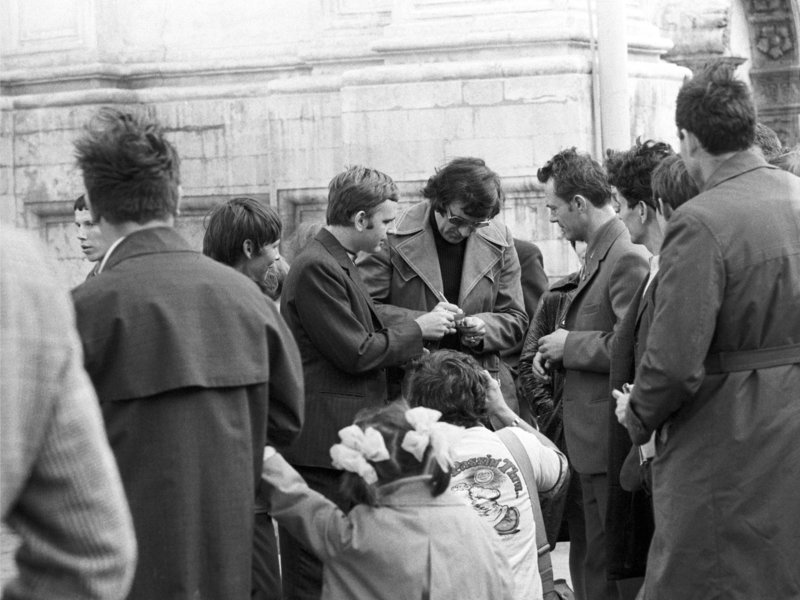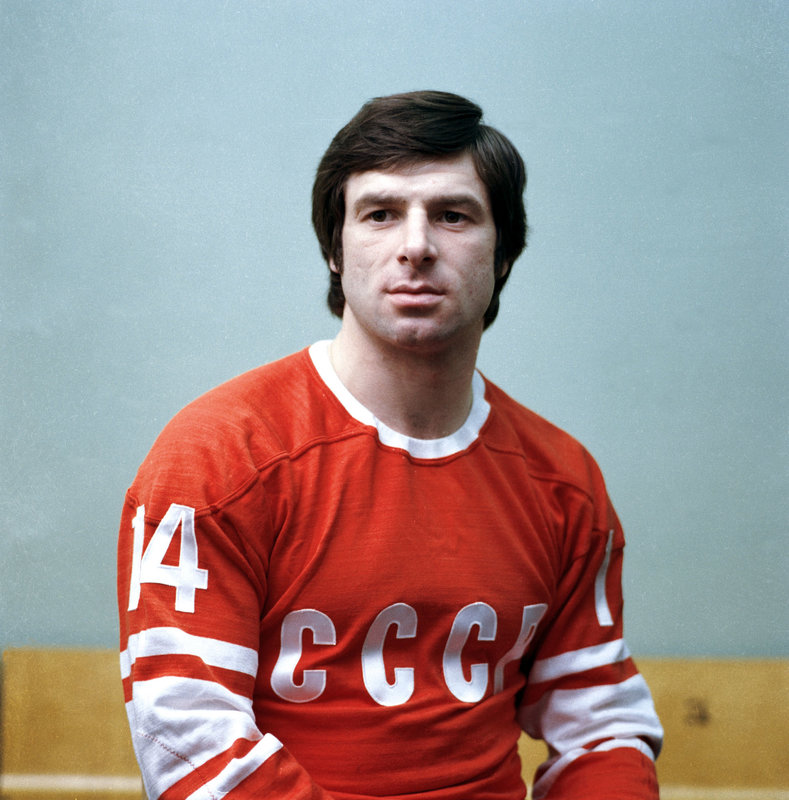USSR and Canada met before the Super Series
You have to make a reservation right away: the 1972 Super Series was not the first meeting between the national teams of the USSR and Canada in history. The debut took place on March 7, 1954 as part of the first world championship for Soviet hockey players in Sweden. On the last day of the tournament, the USSR national team with Vsevolod Bobrov, Viktor Shuvalov, Nikolai Puchkov and others defeated the Canadians with a score of 7:2, winning gold medals.
Since then, meetings between the USSR and Canada have become frequent. The national teams of these states have repeatedly visited their rivals on tour, meetings of the clubs representing the countries have been organized. However, if the Soviet team was represented by CSKA Moscow, Spartak or the national team, then the Canadian team was represented by amateur teams and the national team, which sometimes included former NHL professionals or young people playing for agricultural clubs.
The main value of the 1972 Super Series was that the USSR national team met on ice for the first time, having won 11 gold medals since its debut at the world championships, and Canadian professionals – but not all of them either. The year before the Super Series, the World Hockey Association was formed in North America to compete with the National Hockey League. The bosses of the NHL, who participated in the organization of the series, adamantly opposed the invitation of the Canadian team of representatives of the WHA.
So, for example, the legendary Bobby Hull could not attend meetings with the Soviet team. In February 1972, the Canadian, who was already playing for Chicago at that time, was selected in the WHA Draft by Winnipeg. A few months later, the forward signed the first contract in professional hockey history with the Jets for $1 million.
The confrontation with the professionals could have taken place earlier
Of course, there were ideas for bringing together the Soviet “red machine” and professionals from Canada before. The most realistic chance of seeing these teams meet was two years before the Super Series. The International Ice Hockey Federation dreamed that the strongest Canadian team would participate in the 1970 World Championship. The IIHF, looking at hard hockey in the NHL, decided to change the rules of the game and expand the possibilities to wage a power struggle.
The tournament was to be held in Canada with the participation of the local team – however, consisting of players from non-NHL leading clubs. However, the championship hosts arranged a more convenient schedule for themselves, in comparison with the USSR national team, which led to serious disagreements. The Canadian team refused to make concessions and the IIHF moved the world championship to Sweden. The country of the maple leaf did not field a professional team or an amateur team for the tournament – the next time the Canadians competed in the world championship was only in 1977.
An agreement to organize long-awaited meetings between the national teams of the USSR and Canadian professionals was concluded in April 1972 during the World Championship in Czechoslovakia. The historic deal was signed by Soviet IIHF representative Andrey Starovoitov and Canadian Amateur Hockey Association President Joseph Krichka, who then transferred Super Series hosting rights to Hockey Canada’s well-known organization to this day. .
According to the agreement, the teams were supposed to play eight games with each other under international rules – four in Canada and four in the USSR. The Soviet team for the Super Series was prepared by a coaching duo Vsevolod Bobrov – Boris Kulagin, which came as a big surprise. The invincible “Red Machine” of the 60s and 70s was built by the legendary Arkady Chernyshev and Anatoly Tarasov, but after the Golden Olympic tournament in Sapporo-1972, for mysterious reasons, they left the team.
The national team of the USSR included 30 hockey players, among whom there was no three-time Olympic champion and eight-time world champion, one of the Soviet top scorers Anatoly Firsov. He refused to play for the Soviet team after the scandal with Vsevolod Bobrov before the 1972 World Cup. Later Firsov admitted his mistake.
September 2 – the day that changed the world of hockey
Thanks to the film “Legend No. 17”, the number of Russians who know the course of events in the first match of the Super Series is far greater than the number of experts in the entire eight-game confrontation. Since July, the Soviet team has been seriously preparing for matches with Canada, while the professionals started light training only in August.
“Everyone told us: don’t worry, you can beat them easily. We trained at half strength, in fact, we did not prepare for the upcoming matches in the best way, ”recalls striker Ivan Kurnaye. We did not take the enemy seriously. The scouts who went to Russia said there would be no problems. And the keeper, they say, is weak, and the attackers don’t really know how to shoot.
The underestimation of the opponent took place not only from the players, but also from the Canadian press. The story of how Toronto journalist Dick Beddos promised to eat his article if the USSR national team won at least one out of eight games is one of the most famous and telling. Soviet hockey players also added to the understatement by deliberately deploying at half strength on the morning of September 1 in front of the Canadians.
On September 2, at the Montreal Forum, where more than 18,000 spectators gathered, the long-awaited meeting of the national teams of the USSR and Canadian professionals took place. Even Canadian Prime Minister Pierre Elliott Trudeau attended the game and the pre-game ceremony lasted nearly half an hour. It was obvious to everyone that this was not only a historic event in relations between the USSR and Canada, but also the beginning of a new era in hockey.
What happened next, you probably know. Phil Esposito and Paul Henderson each scored a puck against Vladislav Tretyak in the first seven minutes, instilling even more confidence in the Canadians’ invincibility, for which they were heavily punished. Even before the first break, Evgeny Zimin and Vladimir Petrov equalized the score, and Vsevolod Bobrov said his legend in the locker room: “Guys, you can see that you can play with them on an equal footing.”
The second period was a benefit for ‘Legend No. 17’ Valery Kharlamov, who scored two incredible goals that Canadian goalkeeper Ken Dryden will long remember. True, Kharlamov received a blow with a club from Bobby Clarke, unlike in the film, only in the sixth game. For the entire Super Series, Valery got 8 (3 + 5) points – despite the very harsh actions of the Canadians, he only missed one game.
In the third twenty-minute period, after conceding a goal from Clark in the 49th minute, the USSR national team, thanks to the efforts of Boris Mikhailov, Alexander Yakushev and the same Zimin, won a sensational victory over the Canada. Mikhailov later recalled:
– On the eve of the first game, a meeting was held, at the end of which the head of our delegation, Georgy Rogulsky, said: “You can, of course, lose today, but try to have the decent looking.” And before Game 2 in Toronto, he turned to us with these words: “Comrade hockey players, you have no right to lose.” At this point, many could not stand it – they burst out laughing.
After the game, Beddos arrived at the hotel where the Soviet hockey players lived to eat a newspaper with his article under a hot broth. The USSR national team has proven its readiness to beat not only amateurs at major international tournaments, but also the so-called professionals of the NHL world.
Soviet vacation ruined Henderson
It’s funny, but in terms of the result, the 1972 Super Series can be called one of the most boring failures in the history of the Soviet national team. The Canadian part of the showdown for the USSR ended with two wins, a draw and a defeat, and already in the first match in Moscow, the team of Bobrov and Kulagin staged the main comeback of the series.
In the 50th minute, the Canadian team, supported by nearly 3,000 fans at the Sports Palace, led 4-1, but over the next five and a half minutes, the Soviet team scored four unanswered goals: Vyacheslav Anisin played well on the substitution, Vladimir Shadrin converted a quick break at the gates of Tony Esposito, and Alexander Gusev and Vladimir Vikulov completed the attacks launched by Kharlamov.
For the remaining three games of the national team of the USSR, it was enough to achieve only one victory, but in any case, victory in a tense struggle went to the Canadians. The decisive eighth game turned out to be the most dramatic, where a minute before the end the score was 5: 5, and even that was enough for the Soviet team to achieve overall success thanks to the best goal difference ( 32-30).
The exhausted hosts tried to keep the game tied, but 34 seconds before the final siren, Paul Henderson, who scored the winning goals in the previous two matches in the series, stood alone on the “nickle” and, after receiving a pass from Phil Esposito, hit Tretyak with two tries, bringing the overall victory to the Canadian team.
The 1972 Super Series remained the favorite, but it became a big step in the development of hockey. NHL pros who opened up to the rest of the world realized that the game had to focus not only on the strength and speed components, but also on technique and teamwork. And the national team of the USSR continued to achieve high results in international tournaments already in the most important status of the team that fought “that very” invincible Canada.
Source : MatchTV
I am Sandra Jackson, a journalist and content creator with extensive experience in the news industry. I have been working in the news media for over five years. During this time, I have worked as an author and editor at various outlets producing high-quality content that attracts readers from different demographics.




